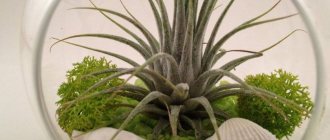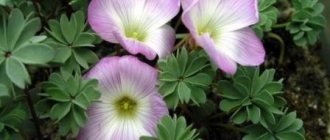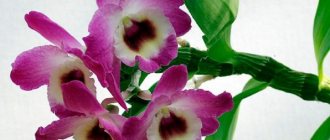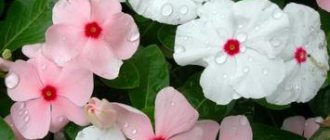Plants » Flowers
0
664
Article rating
Kira Stoletova
Euphorbia tirucalli is a succulent evergreen perennial that has become widespread due to its unpretentiousness to growing conditions. The plant's homeland is considered to be Africa and Madagascar. In the 19th century it was introduced to other territories as food for cattle.
Euphorbia Tirukalli - an unpretentious plant
basic information
Coming from Madagascar, the spurge tirucalli (euphorbia) has spread throughout the tropics, by the way, not without human help. It has been imported to various countries since the 19th century in the belief that it is suitable as livestock feed. And if we talk about unpretentiousness and the ability to grow on poor soils unsuitable for agricultural crops, then milkweed has very few competitors. However, like other euphorbias, tirucalli is poisonous.
There is a theory that the birthplace of euphorbia is India, however, despite the fact that it is popular here and grows in arid areas, this origin is doubtful.
This is interesting! Surprisingly, Indian cattle, despite the toxicity of Euphorbia-tirukalli, eat it with pleasure. Moreover, such food does not harm the health of these animals. In addition, in small towns of India, this plant is grown as high hedges.
Today, Tirukalli is widely distributed in Africa - the northeastern, central and southern parts. Mostly, it is planted where grain crops do not grow.
The flower has also adapted well as a houseplant, however, in such conditions it practically does not bloom.
Exotic culture Euphorbia Tirukalli
Euphorbia Tirukalli looks like an exotic cactus of small size and bright green color. Originally from Africa, Euphorbia Tirukalli is one of the crops that are dangerous due to the poisonous juice they secrete. Proper care of the plant ensures safety for humans and all household members. Prudent farmers breed Tirukalli Euphorbia for livestock feed, because the crop is not only beautiful, but also incredibly nutritious. The succulent stem stretches upward under the warm sun, and the shoots - thick branches - are filled with juices. The juice of the plant is poisonous only in large quantities, so for feeding large livestock Euphorbia is a free and natural raw material.
In poor areas of India, where a constant warm climate creates better conditions for the growth of the variety, Euphorbia is used not only to feed cows, which are not harmed by poisonous juices, but also to build dense green hedges. The plant for household needs can easily be used for decorative purposes. With the help of small shoots (a cutting is taken for propagation), you can create a small exotic corner in your home.
Rubber, a raw material useful in industry, is extracted from milkweed after long-term processing. A plant with a long history is widely used not only to help people with housework, but also to decorate a house or apartment. What does an unusual exotic variety look like? A culture that can easily grow on a windowsill in any part of the world is a branchy tree-like succulent. In wild conditions - in open spaces where humans have not yet reached - Euphorbia grows up to 9 m in height.
The exotic plant is popularly nicknamed “pencil cactus” for the shape of its succulent branches. Even at home, without constant pruning, the plant grows up to 6 m in height. Active growth occurs in the warm season: summer and warm spring. Indoor Euphorbia should be constantly pruned and watered depending on the ambient temperature. The location for Tirukalli is selected taking into account the fact that Euphorbia is a sun-loving plant.
Description of the plant
If you look at a neat homemade Euphorbia rubber bush, it is difficult to imagine that in its natural environment it can reach 9 meters in height. Although, even at home, without timely pruning, it can grow up to 6 meters!
This dangerous, but very original plant has a great many branches, a rounded stem with a smooth surface. In young milkweed it is bright green, and in old milkweed it becomes dark gray.
Tirukalli flowers have no petals; its single inflorescences are united into one umbrella inflorescence. Linear green leaves 1.5 mm wide and 12 cm long. By the way, leaves are a decoration only for young succulents; old ones do not have them at all.
The plant is highly decorative due to the abundance of fleshy branches that form a chic, voluminous bush. Thanks to them, the flower resembles corals - beautiful and bewitching guests from another element.
Like other euphorbias, tirucalli contains milky sap with euphorbine, a highly toxic substance that, when entering the body, causes serious intoxication. It is also dangerous for the skin and mucous membranes, leaving severe burns. If it gets into the eyes, there is a risk of complete loss of vision. Therefore, during any contact with a home flower, it is recommended not to forget about personal protection: gloves, mask and goggles.
This is interesting! Euphorbia tirucalli, like many species of Euphorbia, is valued as a natural medicine. Its poisonous milky juice, rich in beneficial substances, was used for medicinal purposes by aborigines in ancient times. But, in addition to the juice, rhizomes and shoots were also used.
Modern healers and herbalists also use this natural remedy and produce various potions and external compositions. Which is not surprising, because spurge is a storehouse of valuable elements, sometimes not synthesized by the body and entering it only from the outside.
This is interesting! Euphorbia tirucalli was nicknamed rubber plant because its milky sap was the source of natural rubber. It is also interesting that at the end of the last century in Brazil they decided to use the milky juice of milkweed to produce oil. The author of the concept was chemist Melvin Calvin, according to his calculations it turned out that if you plant a couple of acres of poor soil with milkweed, you can get up to a hundred barrels of oil. However, so far “green oil” is not so popular and remains a backup plan for the coming resource depletion.
One more nuance - if you want to have a home flower that will actively bloom and delight the eye with bright colors, then it is better to refuse euphorbia tirucalli. These plants do not flower in captivity.
How to care for a tropical beauty at home?
Growing and caring for euphorbia tirucalli is so simple that even beginners who do not have experience or deep knowledge in this area can do it. The flower is unpretentious, however, we must not forget about its origin and special needs - where other flowers feel bad, there the spurge feels not just good, but wonderful.
Soil for Tirukalli
In this matter, you don’t have to go into too much detail and purchase ready-made soil and fertilizers intended for cacti and succulents. Such soil mixtures have the desired consistency - light, airy, contain few useful substances (as poor as the soil in the homeland of Tirukalli) and do not retain moisture, preventing the plant from rotting.
You can prepare a similar mixture with your own hands, following the recommended proportions, mix:
- 1 part leaf soil;
- 1 part garden soil;
- 1 part coarse sand.
When the soil is ready, you can add one more component - charcoal in small quantities.
Suitable pot
Probably all lovers and connoisseurs of succulents know that it is better to grow these unique plants in wide, shallow containers. This also applies to tirucalli, it has a shallow root system that does not go deep.
The pot must be stable, with the obligatory presence of drain holes through which excess water is drained.
The bottom of the pot is covered with a drainage layer - this is another prerequisite for growing succulent plants. This can be small crushed stone, gravel, brick chips, vermiculite or expanded clay. You can also purchase special drainage in the store, for example, in the form of balls.
It is important! It is not recommended to purchase a container for milkweed “for growth”, that is, a larger volume than required. In such a spacious “dwelling” it will be difficult for a slow-growing flower to get comfortable. Not only can its appearance deteriorate, but it also threatens to rot the rhizome.
Temperature
Temperature is important for tirucalli and experienced gardeners recommend adhering to optimal conditions. For summer, this is from +21 to +23 degrees during the day and from +15 to +18 degrees at night. At this time, it is recommended to take it out into the fresh air, but it is important that there are no drafts or precipitation.
Winter for a tropical guest is a period of rest, therefore, if possible, it is better to place the container with euphorbia in a cold room where the temperature is kept at +15 - +12 degrees. Euphorbia may not tolerate cold air.
Watering mode
Under indoor conditions, the growing season of a succulent lasts from spring to autumn. At this time, the flower should be watered moderately, and the top layer of soil should be allowed to dry. Excessively frequent and abundant watering can cause rotting of the root system.
In winter, the plant's need for moisture is significantly reduced; 2-3 waterings per month are sufficient. But you should avoid completely drying out the soil.
It is important! The water should be left standing for several days, at room temperature or lukewarm.
Lighting
Despite the fact that this plant is very unpretentious, it loves the sun and warmth, so you should not place it in a room without windows or in complete shade. It is best to place the container with the flower on the south side.
A significant lack of light will immediately affect the appearance of the succulent: it will begin to stretch and lose its decorative properties.
It is important! Tirukalli is poisonous, which means it should be placed where children and pets cannot reach the flower! If this is not possible, then it is better to refuse to keep milkweed in your home. More often, such flowers decorate non-residential premises - offices, retail spaces, etc.
Trimming
Among other succulents, this spurge is characterized by relatively fast growth, so it requires systematic pruning. Using a knife with a sharp blade, it is necessary to cut off the upper part of the shoots, leaving branches of a suitable height.
After pruning, the wounds are treated with crushed coal. The cut parts can be used for subsequent cuttings.
Fertilizer
It is recommended to feed the “pet” in the spring, when it is growing most actively. It is enough to do this 1-2 times per season, using liquid fertilizers for cacti. If you apply mineral fertilizer correctly, without exceeding the recommended dosages, this will add intensity to the color of the flower.
It is important! Organic fertilizers are rich in nitrogen, which succulents need in small quantities. Therefore, it is not recommended to add organic matter - it will provoke too rapid growth of milkweed, leading to cracking of the stems, rotting and death of the flower.
Possible difficulties during cultivation
The greatest danger to the plant is root rot. Therefore, the main stage of caring for milkweed is to control soil moisture. If the soil is waterlogged and the room temperature is below +18 degrees, rotting begins not only in the roots, but also in the shoots. In this case, it is difficult to save the flower; the only solution is replanting with complete removal of the damaged areas.
When overcooled, the plant acquires a brown tint and the stems soften. If there is insufficient lighting, the shoots stretch out and become thinner; in this case, it is enough to cut off the damaged sections of the stems and move the pot to a sunny place. If the lighting is too bright, the stems will turn yellow.
With the right approach, the perennial lives for a long time in any conditions, without requiring constant attention. Infrequent pruning and watering, as well as rare showering or spraying, are the minimum necessary procedures in terms of caring for milkweed.
{SOURCE}
Reproduction
Euphorbia tirucalli can be propagated only in one way - by cuttings. Shoots that grow upward are taken as cuttings - they are cut with a sharp knife or scissors:
- the cuttings should be placed in a container with warm water - this will rid the cuttings of the poisonous milky juice;
- then they should be taken out and left in the air for 24 hours, allowing to dry;
- It is advisable to treat the cut areas with a phytohormonal preparation or crushed coal powder;
- a layer of peat is poured into the prepared container, and coarse, pre-washed sand is poured on top;
- the cutting is immersed in the soil until its lower part is in the peat layer;
- after it is watered and the container is placed in a place where it is warm and light.
In order for roots to form faster, it is recommended to provide the shoots with a “greenhouse effect” - cover them with a glass jar or a cut-off plastic bottle.
The milkweed tirucalli bush will be more voluminous and lush if you transplant not just one rooted cutting into one tank, but several at once.
This is interesting! How does this plant reproduce in nature? As it turned out, the stems of Euphorbia rubbery root themselves. Having reached a decent length, they begin to hang down under their own weight, reach the ground and take root. If you plant a flower in a spacious pot and prune it rarely, this can also happen at home.
Care
Fertilizers and fertilizers
Euphorbia is fertilized only during the growing season. Specialized preparations for cacti are used as fertilizers. During the resting stage, there is no need for additional nutrients.
Watering
The crop is drought-resistant, and therefore overwatering the substrate is destructive. In the summer, the flower is watered no more than once a week; during the dormant period, soil moisture is minimized, waiting until the earthen clod dries completely. On average, a gap of 1 month is maintained between procedures in the hibernation phase.
Water for irrigation is used to stand for 5-7 days.
Choosing a pot
Choose a stable pot for the plant.
The root system is located superficially, which determines the requirements for pots. Ideally, it should be wide and small in height. Also a prerequisite for the container is drainage holes at the bottom. For adult specimens, the stability of the container is important.
Transfer
The first procedure is carried out 10 days after purchase. In this case, you should choose a pot that is larger in size than the transport one.
Subsequently, they are replanted every 2-3 years as the container is filled with roots.
Trimming
Due to the rapid growth of green mass by Euphorbia, it is necessary to carry out regular formative pruning. The procedure is planned for the spring. The tool used is a well-sharpened knife, which is used to cut the upper part of the shoots to the required length. After cutting, it is recommended to treat with crushed activated carbon.
All manipulations are carried out with protective gloves to avoid irritation of the skin and mucous membranes with milky juice.
About diseases, pests and possible difficulties
Euphorbias are plants that are quite strong, unpretentious and resistant to various changes. However, they also have a couple of weak points, for example, excessive humidity and a sharp drop in temperature, which can seriously harm the flower. But, in most cases, the flower can be helped, so it is better for owners to know in advance what pests and diseases that arise on euphorbia they may encounter.
Common Milkweed Diseases
- Rotting of the root system is the result of waterlogging of the soil; the situation can be corrected by transplanting the flower into another pot, removing previously affected areas of the rhizome.
- Severe hypothermia - if the stems have turned brown and become soft, then it will no longer be possible to save the tirucalli, it is frozen.
- Sunburn - being under the scorching rays of the sun at midday can cause the plant to burn, so you should take care of shading.
Pests
Mealybug (hairy louse) - can be detected with the naked eye, especially since the parasite leaves a whitish, cotton-like waxy discharge on the stems of the plant. The scale insect sucks the juices from the flower, stunting its growth. There are root scale insects that attack the roots of the flower.
You can get rid of spurge from the pest as follows:
- the affected areas are cleaned of insects and plaque with a sponge soaked in soapy water;
- the plant is sprayed with a solution of green soap - 5-8 g per liter of water (can be replaced with infusion of tobacco, garlic, cyclamen decoction) - 3 procedures will be required at weekly intervals;
- in case of severe lesions, it is recommended to use insecticides - Aktaru, Biotlin, Calypso, Tanrek, etc.; the affected succulent is sprayed after soap treatment, the interval between treatments is 1–2 weeks.
Spider mites are tiny pests that can hide in the soil and leaf axils. When they start, the leaf blades are covered with light or pale yellow spots. With heavy damage, the flower becomes covered with the finest cobwebs.
You can try to remove spider mites using folk remedies, but they are not highly effective. Therefore, experienced flower growers advise immediately using the “heavy artillery” - insecticides: Neoron, Flumite, Actellik, Skelta, etc.











